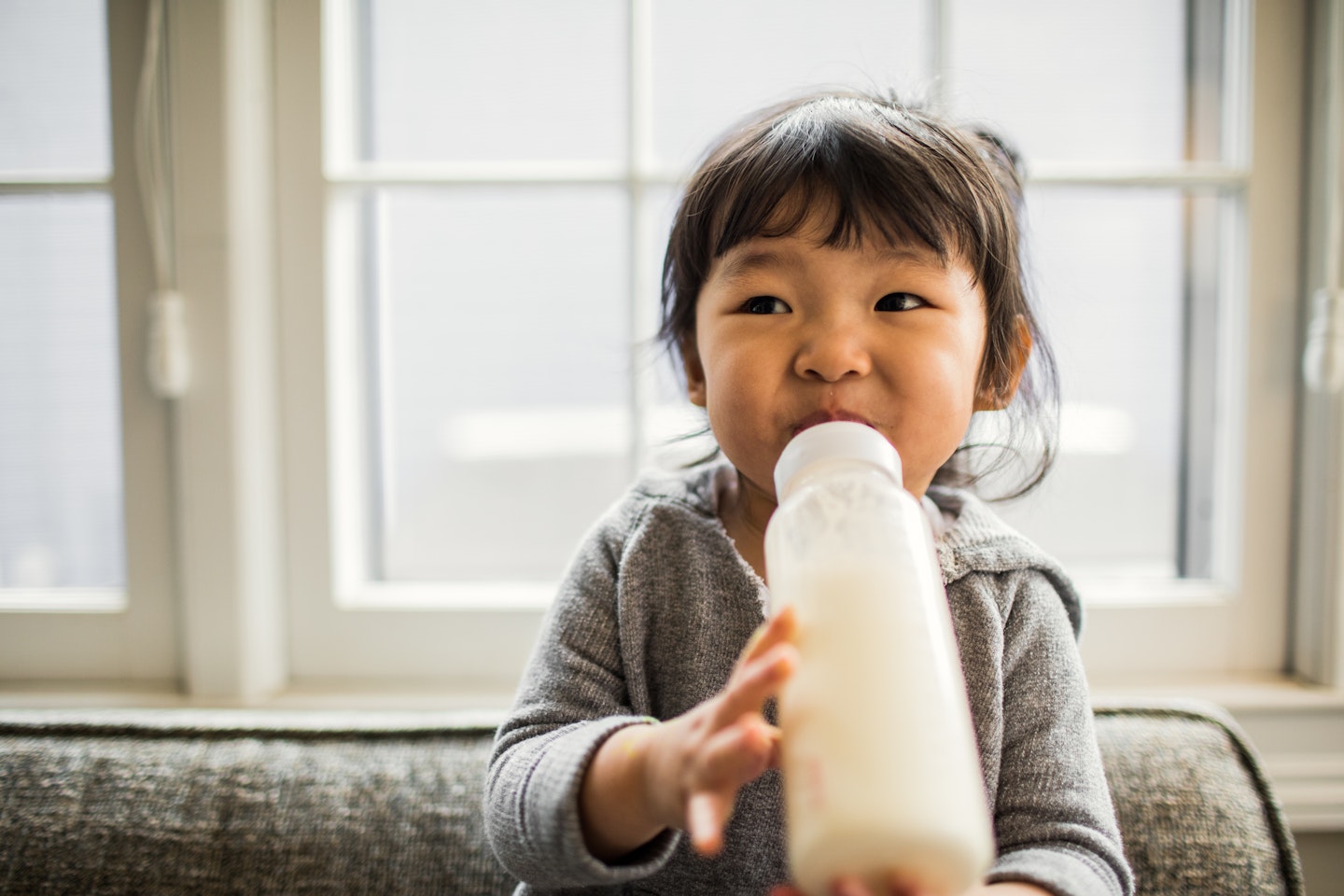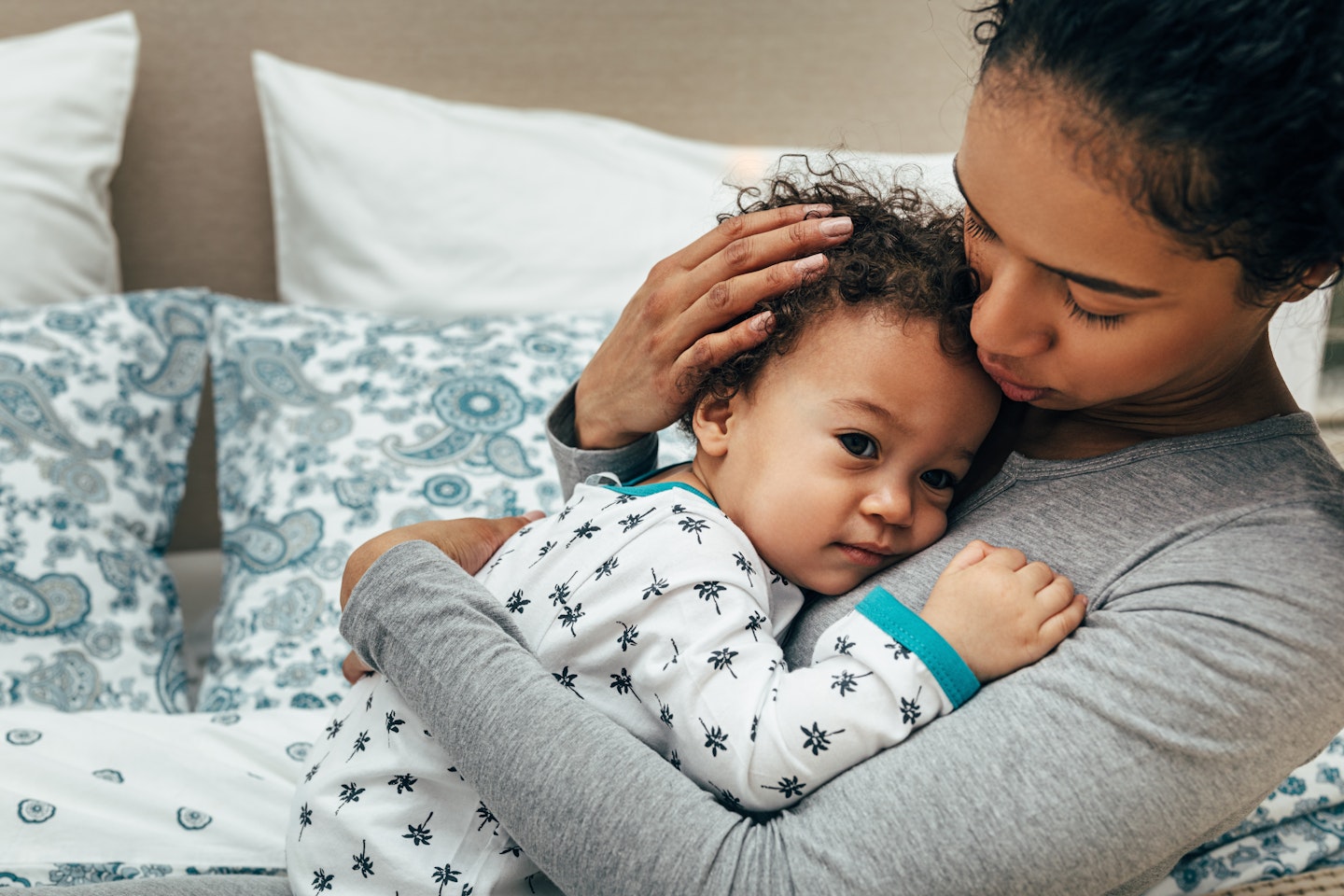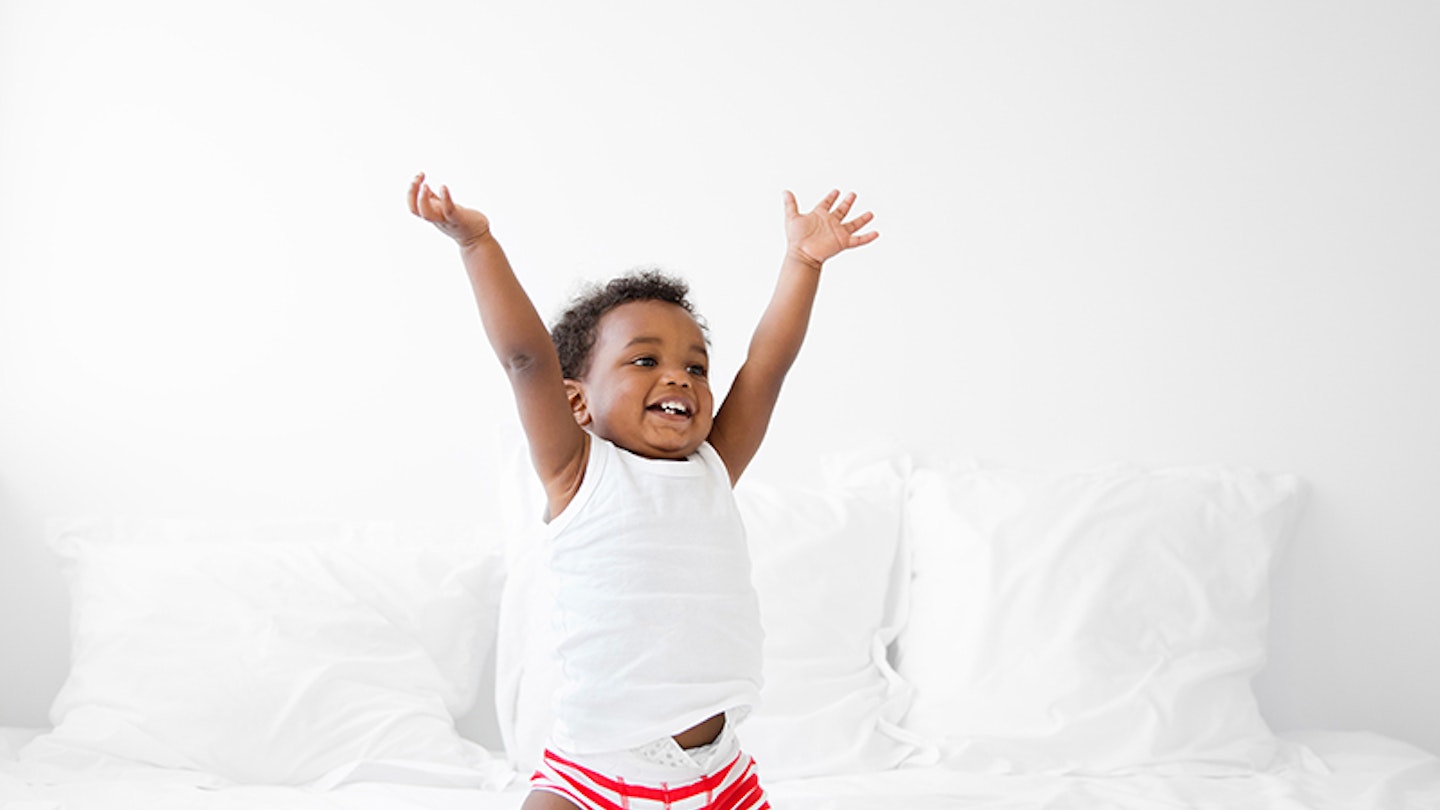Nighttime potty training tips in this article:
So you’ve conquered daytime potty training. Your toddler loves their new pants and you can’t even remember when their last little accident was. But does your little one still wear a night-time nappy?
If you’re like the majority of mums, your tot will still be in a nappy at night long after they're dry during the day. Bedwetting is a very common childhood problem, but it is also a hurdle that all children overcome.
According to Amanda Jenner of the Potty Training Academy, you’re doing the right thing. ‘I always advise parents to wait until their child is reliably dry during the daytime before tackling nights,’ she says. ‘Trying to do it all at once can be daunting, result in more accidents which can be upsetting for your little one, and make you more likely to give up.’
You're ready start nighttime potty training if:
-
Your tot successfully uses a potty during the day
-
She is able to hold on for a few minutes before she wees
-
Your youngster doesn’t like her wet nappy in the morning
-
She tells you her night-time nappy is wet or wakes up with a dry one
Expert nighttime potty training tips:
If you and your tot are ready, take these steps to dry, nappy-free nights…
Prepare yourself
A few products will speed you to success. You’ll need pull-up night-time pants that are absorbent but still feel wet after a wee; a waterproof cover for her mattress; and a night light. ‘Lots of children are scared of the dark. Between age two and age three is a common time to become afraid of it,’ Amanda says. ‘A soft light that leads the way to the potty or toilet is reassuring.’ Let your child help choose the products. Explain why you’re buying them and how they’ll help her when she’s not wearing a nappy at night. It’s also a good idea to re-instate a stair gate at the top of the stairs, if you’ve taken it away.
Make it an adventure
Make a big thing of telling her she’s not going to wear a nappy tonight. Say, ‘Let’s put these nappies in the bin – we don’t need them now we’ve got big-girl pants, do we?’ Ask her where her wee now needs to go during the night, too.
Limit bedtime drinks
Make your tot’s last drink of the day half an hour before she goes to bed. This gives time for the liquid to pass through her system before she goes to sleep. It also ensures a big wee when she goes to the loo before bed.

Reward the last wee
Just before she climbs into bed, tell her if she sits on the toilet or potty she can choose a book for bedtime. ‘Or make a reward box,’ Amanda suggests. ‘Pop in a few inexpensive treats (not sweets) so she can do a lucky dip after she’s been. It won’t take long before she associates going to the loo with a reward, and does it automatically.’ The rewards need only be temporary until having a last wee becomes part of the bedtime routine. ‘Once it’s second nature, stop adding treats to the box and the game naturally ends,’ says Amanda.
Help if they need it
Tell your child that if she wakes up and needs to go for a wee, she can use the potty or loo by herself, but she can call you for help if she wants. This way, she won’t wet the bed as a result of being scared of going to the loo by herself.
Don’t make it a drama
‘Don’t make night-time wees into a big deal or you’ll end up with a toddler running around at 2am,’ says Amanda. Help her to go to the loo with as little chat as possible, then tuck her back into bed, tell her it’s time to go back to sleep and slip out of the room. Children are unlikely to need a poo during the night, but if she does, deal with it calmly.

Accidents will happen
Accept there will be slip-ups and don’t make a big deal about them. Most children hate wet beds so she might already be upset. Keep spare bedding in her room so you can replace it easily. If urine has seeped into the mattress, just turn it over and deal with it in the morning. ‘Blame the urine, and not your child,’ says Amanda. ‘Say “never mind, the silly wee-wee should have gone in the potty not in your bed.”’
Deal with a deep sleeper
If your toddler wets the bed more nights than not, it might mean she’s a deep sleeper and isn’t waking when she needs to go to the loo. In this case, just before you go to bed, lift her onto the potty. And be prepared to continue to do this until her bladder has grown big enough to hold more urine. Move her last drink to 45 minutes before bedtime, and keep a drink diary to check she’s not drinking too much during the day.
Be persistent
Once you start night-time training, don’t stop. ‘Even if your little one is unwell, don’t put her back in nappies at night, even though it means a bit more clearing up,’ Amanda urges. Once your child has woken up dry for a few weeks, swap pull-ups for ordinary pants. Tell her, when she’s ready, she can choose not to wear anything under her pyjamas.
Meet the expert: Amanda Jenner is part of the Potty Training Academy and is well-known for her expert tips and advice around toilet training toddlers. She's appeared in prime time tv shows including Channel 4’s “Too Posh To Parent” & This Morning.
Read next on Mother&Baby:
Make sure you're following Mother & Baby on Instagramfor relatable memes, inspiring stories and parenting hacks!
Whether you’re planning your new baby essentials shopping list, giving friends and family gift ideas, or planning for your baby shower, the Amazon Baby Wish List allows you to keep track of all your shopping ideas in one place.Click here to start yours today!
